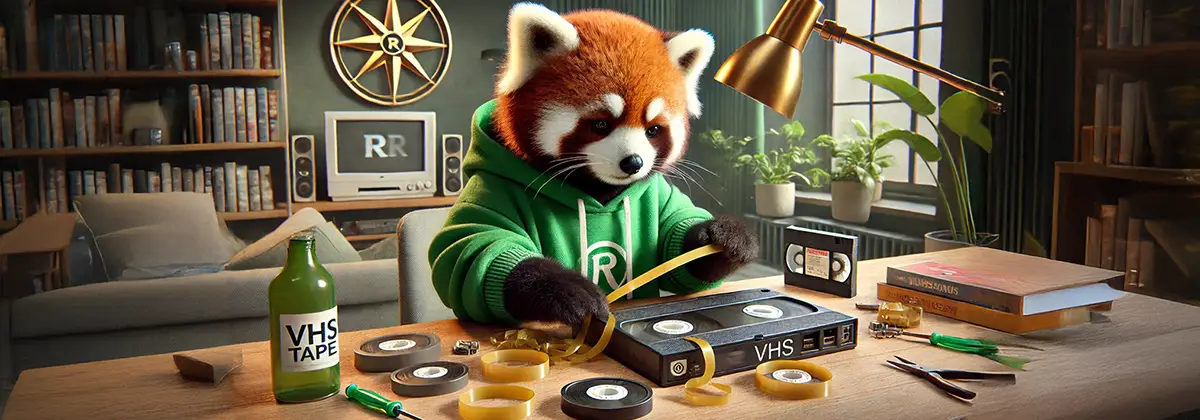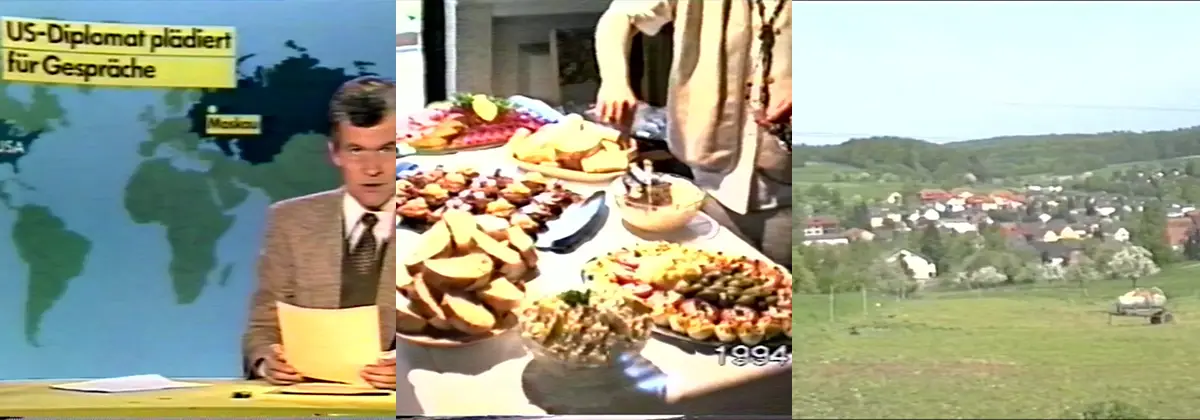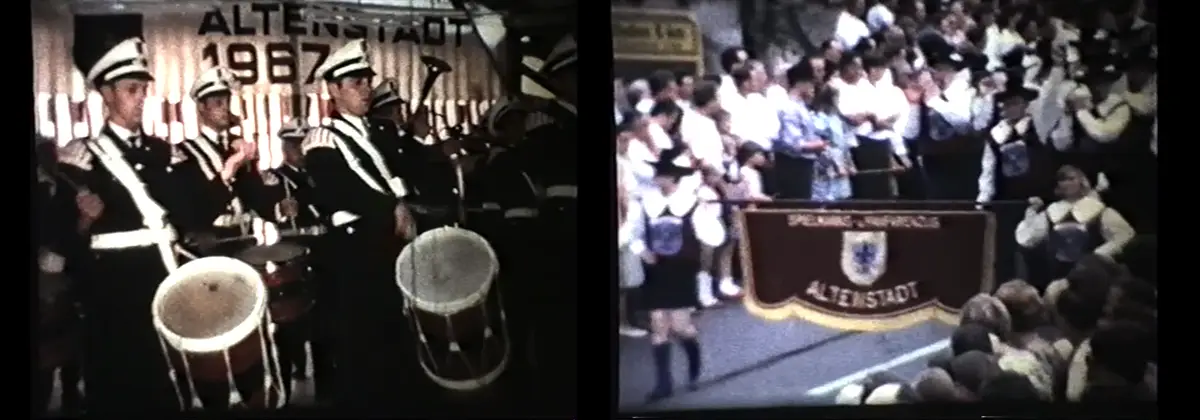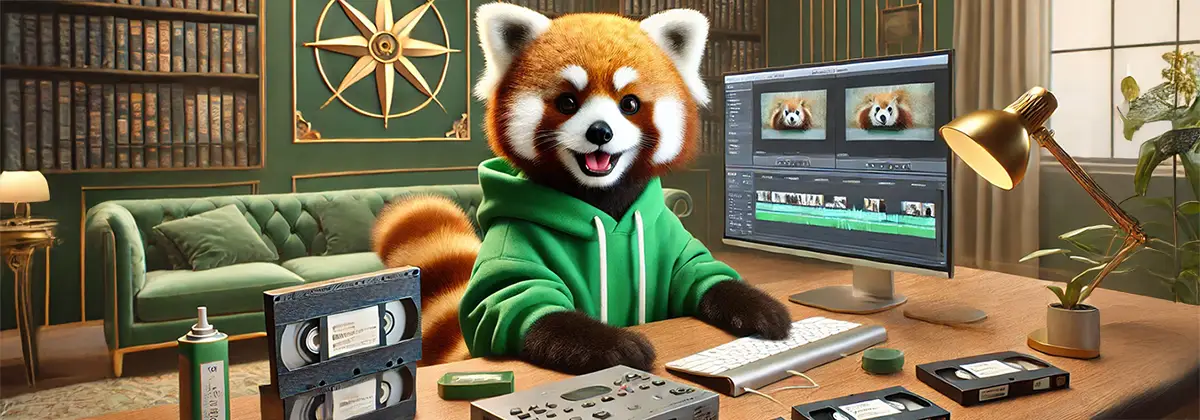We all have them tucked away somewhere—old VHS tapes holding precious memories. Maybe they’re family videos, wedding footage, or birthday celebrations, or even old TV recordings that pull us back to a different time, like a time machine. But VHS tapes aren't built to last, and that's exactly why it's so important to digitize these treasures. In this article, I’ll share my personal journey of digitizing VHS tapes and offer practical tips to help you bring your memories into the digital future.

The VHS Challenge: Why Are These Tapes So Fragile?
Recently, as I was going through my basement, I stumbled upon a small collection of old VHS tapes I had digitized over the years. It immediately reminded me that many of us are in a similar situation—we possess physical memories that mean the world to us, but the medium they’re stored on is well past its prime.
VHS tapes are made of magnetic tape, which deteriorates over time. Heat, humidity, and mechanical wear can greatly degrade the quality. Additionally, the devices needed to play these tapes are becoming rarer. A vintage VHS player and an analog TV with Cinch or SCART inputs are now almost relics. Plus, the mechanical parts and rubber belts in VHS players tend to break down—making repairs difficult for the average VHS user.
While YouTubers and tech enthusiasts often show how to fix these devices, most of us need a more straightforward solution. The best way to save these cherished memories? Digitizing them—before it’s too late.

The Art of Digitizing: From Old Capture Cards to Modern Converters
At first, digitizing VHS tapes may sound complicated, but over the years, I’ve experimented with different methods suitable for various technical setups. My favorite? An old PCI capture card in a Windows XP computer—it might sound retro, but it yields surprisingly good results.
The Best Method: PCI Capture Cards and Windows XP
Back in the early 2000s, when VHS hadn’t yet fully disappeared from living rooms, I used a PCI capture card with direct Cinch and S-Video inputs. These cards offered one of the best ways to capture VHS footage in high quality. Why S-Video? It separates brightness and color information, resulting in a clearer image than standard Cinch connections.
The process was simple: Connect the VHS player to the capture card via S-Video, play the tape, and record the signal on the computer with specialized software. I used to save the files as MPEG to transcode them later on modern machines. The downside? You need an old computer with Windows XP and the right capture hardware. But if you can gather these pieces, it’s the highest quality method to digitize your VHS treasures.
If you have similar setups available or can track down old parts via auction sites, you can recreate a perfectly functioning digitization station. Mid- to high-end VHS players from brands like JVC or Sony will always perform better than budget options, providing you with better playback quality.
Modern Alternatives: HDMI-Cinch Converters and Capture Devices
What if you don’t have access to such vintage hardware? No worries—there are modern solutions. An HDMI-Cinch converter combined with an HDMI capture device is a solid alternative. These converters transmit the analog VHS signal into a digital format, which can then be captured on a modern PC using software like OBS Studio.
Of course, converters often lead to quality loss—they aren’t as precise as old, specialized capture cards. Even though they may advertise “HD quality” at 720p or 1080p, the results might be less impressive than expected. Still, for most casual users, this is an easy, affordable, and functional solution. Just make sure to choose high-quality converters and capture devices, as cheaper models tend to deliver subpar image quality.

Preserving Quality: Tips for Storing Your Digitized Videos
Once you’ve digitized your tapes, the next question is: How do you store the videos long-term without losing quality? I’ve experimented with various formats and codecs, and two options have stood out: H.265 (HEVC) and AV1.
H.265 and AV1: Efficiency Meets Quality
H.265, also known as HEVC (High Efficiency Video Coding), is a powerful codec that provides an excellent balance between file size and video quality. It allows you to compress large video files without noticeable loss of quality. The newer AV1 codec, a freely available alternative, offers similarly impressive compression rates but is only hardware-accelerated on newer graphics cards (pure software encoding via CPU takes a very long time and is therefore inefficient). I recommend storing these videos in an MKV container, which can handle both audio, video, and additional metadata seamlessly.
If you want to preserve the highest possible quality, make sure to store your videos in a lightly compressed format. You will notice a difference compared to highly compressed formats, such as most MP4 presets, particularly when archiving professional videos. However, the default settings for HEVC/AV1 are usually sufficient. Especially for videos like the one shown in the previous screenshot—shot in 1967 and later recorded from a projector onto a VHS camcorder, where the original material already has limited quality.
I personally like to use Handbrake for this, as it offers all the necessary tools, and I can also deinterlace the video directly (so that typical interlacing artifacts and "stripes" disappear without needing player adjustments). Additionally, Handbrake offers a CLI tool, which allows me to automate encoding on my server.

Conclusion: Now is the Time to Digitize Your VHS Treasures
Digitizing your old VHS tapes is not just a journey into the past, but an investment in the future. The longer you wait, the greater the risk that these precious memories will be lost forever. Whether you’re using old capture hardware or modern converters—the key is to act now and safeguard your tapes.
For me, digitizing was an incredibly rewarding experience. The old family videos I transferred on my Windows XP machine are still in surprisingly good quality and remind me every time how important it is to preserve the past so that we can continue to enjoy it in the future.
Do you still have old VHS tapes in your basement or attic? Don’t wait any longer! Whether you’re looking for professional help or want to try it yourself, I’m here to help with advice. Share your experiences or ask for tips—together, we can make sure these memories aren’t lost!
This post was created with assistance from AI (GPT-4o). The illustrations were AI-generated and all screenshots were taken by myself. Curious how AI can help create content and images from your own ideas? Learn more at Neoground GmbH.







Noch keine Kommentare
Kommentar hinzufügen